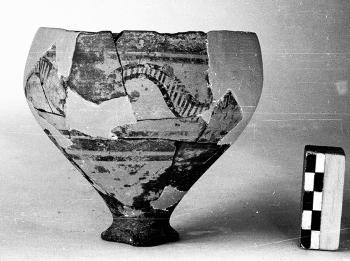American Journal of Archaeology | The Journal of the Archaeological Institute of America
You are here
Reconsidering Technological Transmission: The Introduction of the Potter’s Wheel at Ayia Irini, Kea, Greece
April 2016 (120.2)
Reconsidering Technological Transmission: The Introduction of the Potter’s Wheel at Ayia Irini, Kea, Greece
This article examines processes of cultural and technological transmission by focusing on the effects of the introduction of the potter’s wheel. Since distinct production choices are tied to both micro- and macroscale processes that drive change in material culture, a study of such choices provides insight into processes of acculturation, technological transmission, and local social dynamics. The authors therefore examined macroscopically a large corpus of complete vessels from Ayia Irini, Kea, for evidence of the manufacturing technique(s) used in the production process. These locally produced pots, dating to the period spanning the Middle and Late Bronze Age in the Aegean (ca. 1900–1400 B.C.E.), when Ayia Irini acted as a hub of interregional exchange, attest to the adoption of the wheel by the local potters, presumably through contact with Cretan communities of practice who were already using this technique. Evidence for connections between local, Cretan, and Cycladic communities of practice is presented, and the reasons driving the process of innovation are considered. The results of this study confirm some established narratives about the introduction of the wheel but at the same time reveal significant differences between Aegean communities in their adoption of this new technology.
By Evi Gorogianni, Natalie Abell, and Jill Hilditch
American Journal of Archaeology Vol. 120, No. 2 (April 2016), pp. 195–220
DOI: 10.3764/aja.120.2.0195
© 2016 Archaeological Institute of America


